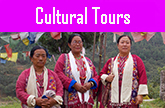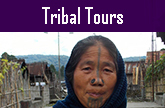Dzukou Valley Trek – Nagaland
Tour Duration : 4 Nights / 5 Days
Travel Season : All year round
dzukou valley trek itinerary:
Day 01: Dimapur - Kohima (74 kms, 3 hrs drive)
Meet upon arrival at Dimapur Airport / Railway Station.
Dimapur:
Dimapur, the gateway of Nagaland is designated to be the largest city in Nagaland, popularly known as the "City of River People". 'Dimapur' is a derivation from Kachari dialect in which 'di' implies river, 'ma' meaning great and 'pur' means city, together meaning "the city near the great river". This city, situated at an altitude of 475 feet above mean sea level is the most developed and industrialized area of the state.
If time permits, visit at Dimapur -
Medieval Ruins of Kachari Kingdom:
Dimapur holds the status of being the ancient capital of Kachari tribe who ruled the state before 13th century. The glory of the Kachari kingdom appears on the ruins spread around Dimapur. The ruins provide evidences of the Kachari civilization reflecting a touch of Hinduism who were pre-dominantly non-Aryans.
Diezephe Craft Village:
The village exhibits trained weavers and craftsmen skilled in wood carvings, bamboo and cane works. In recent times, the village has developed in this field of art expanding the variety of handloom and cane products with the assistance of Nagaland Handloom and Handicrafts Development Limited.
North East Zone Cultural Centre Museum:
This cultural centre set in a well conditioned museum organizes various cultural programs in and outside the state. Centre aims at the cultural promotion of the state and provides ample scope for tourists desiring to gain knowledge and information about the various cultural heritages of North Eastern people.
Thereafter, drive further to Kohima.
Kohima:
The capital city of Nagaland, situated at an altitude of 4738 feet above mean sea level is encompassed by hills providing a majestic beauty to the city. The name 'Kohima' has been derived from Tenyidie dialect 'Kewheimia' meaning "people living in the hills". Kohima received its present name from the British rulers who had set up colonial units devastated during the Second World War. Kohima city is inhabited by the Angami, Rengma, Kuki and Zeliang Naga tribes. It is a beautiful hill station of North-East India beckoning the tourists to its religious, monumental and village attractions.
Arrive at Kohima and check-in at hotel / home stay.
Evening: Free at relaxation. Overnight: Stay in hotel / home stay.
Day 02: Kohima (Starting Day of the trek)
In the morning after breakfast, drive to Viswema village.
After reaching Viswema village, start trekking uphill for 1 hour 30 minutes until the first break.
Take rest for an hour. Start trekking again for another 3 hours through plain lands to Dzukou Valley Rest House.
Evening: Free at relaxation. Overnight: Stay in basic rest house.
Day 03: Kohima (Ending Day of the trek)
In the morning after breakfast, enjoy trekking for one hour to the picturesque valley of flowers. Spend some quality time in the lap of mother Nature.
After lunch, start return trek to Viswema village.
After reaching Viswema village, take return transfer to Kohima by car.
Evening: Free at relaxation. Overnight: Stay in hotel / home stay.
Day 04: Kohima - Khonoma - Kohima (20 kms one way, 45 mins drive)
In the morning after breakfast, drive to Khonoma Green village.
Khonoma Green Village:
Khonoma village is the homeland of the Angami tribe. This 700 year old village also referred to as 'Khwunoria' by the inhabitants holds a historical record of a brave resistance made by the Naga warriors against the British in 1879 AD. The presence of a fort called 'Kuda', meaning "a place of defense" is a unique feature of this village. The villagers practice terrace farming of Alder trees which exhibits their skill in management of terraced cultivation. This farming fixes nitrogen in the soil which controls soil erosion. This step towards 'eco-tourism' has heightened the mission of "Green Khonoma" in the village.
In the late afternoon, take return transfer to Kohima and visit -
Kisama Village:
Kohima village:
Kohima village, also known as Bara Basti is considered as the second largest village in Asia. It is also one of the most densely populated villages in the continent. Legend narrates that the village was set up by a man called Whinuo Kewhira. Kohima village is grouped into 4 khels namely Dapfutsuma, Lhisema, Pfuchatsuma and Tsutsonuoma. Several clans are brought together within the village community by the institution called 'khel' which governs the entire village. The membership of a khel depends on two aspects - birth or heredity. The ancient Kohima village was believed to possess 7 lakes along with 7 gateways. The main entrance of the village is set with a traditional wooden gate carved in traditional Naga art and decorated with horns of gayal (mithun) reflecting the glory of the ancestors of the village.
Kohima War Cemetary:
It is a war memorial set in the honour of those valorous soldiers and officers who sacrificed themselves during the Second World War. The cemetery, earlier known as 'Garrison Hill' is maintained by the Commonwealth War Graves Commission. Sir Edwin Lutyens was the principal architect of this cemetery. There stand 1421 magnificent stone graves of the brave soldiers killed in the battle of Kohima in April, 1944. Of these, 1070 graves are of soldiers from United Kingdom, 5 Canadian soldiers, 3 Australian soldiers, 33 graves of undivided India, 2 graves of East African soldiers, 1 from West Africa, 9 Burmese soldiers and a single non-war grave. Each grave bears an appropriate epitaph engraved in bronze. Historians regard the Battle of Kohima as "one of the bitterly fought battles of the Second World War". The British before departing Kohima had erected a heart touching inscription inside the memorial in the memory of brave comrades which reads: "When you go home, tell them of us and say: FOR YOUR TOMORROW, WE GAVE OUR TODAY."
Sales Emporium:
The Sales Emporium houses a wide collection of Naga handloom and handicraft items. Such handloom articles are also available in private outlets such as Gurtal (near war cemetery) and Belho Weavers (beside Assam Oil Company).
Overnight: Stay in hotel / home stay.
Day 05: Kohima - Dimapur departure (74 kms, 3 hrs drive)
In the morning after breakfast, take transfer to Dimapur airport / railway station for your onward destination.
Tour terminates here
North East India Tourism
Package Inclusions:
# All ground transportation by a dedicated and exclusive vehicle driven by our experienced and friendly driver
Package Exclusions:
# Any air fare or train fare


















